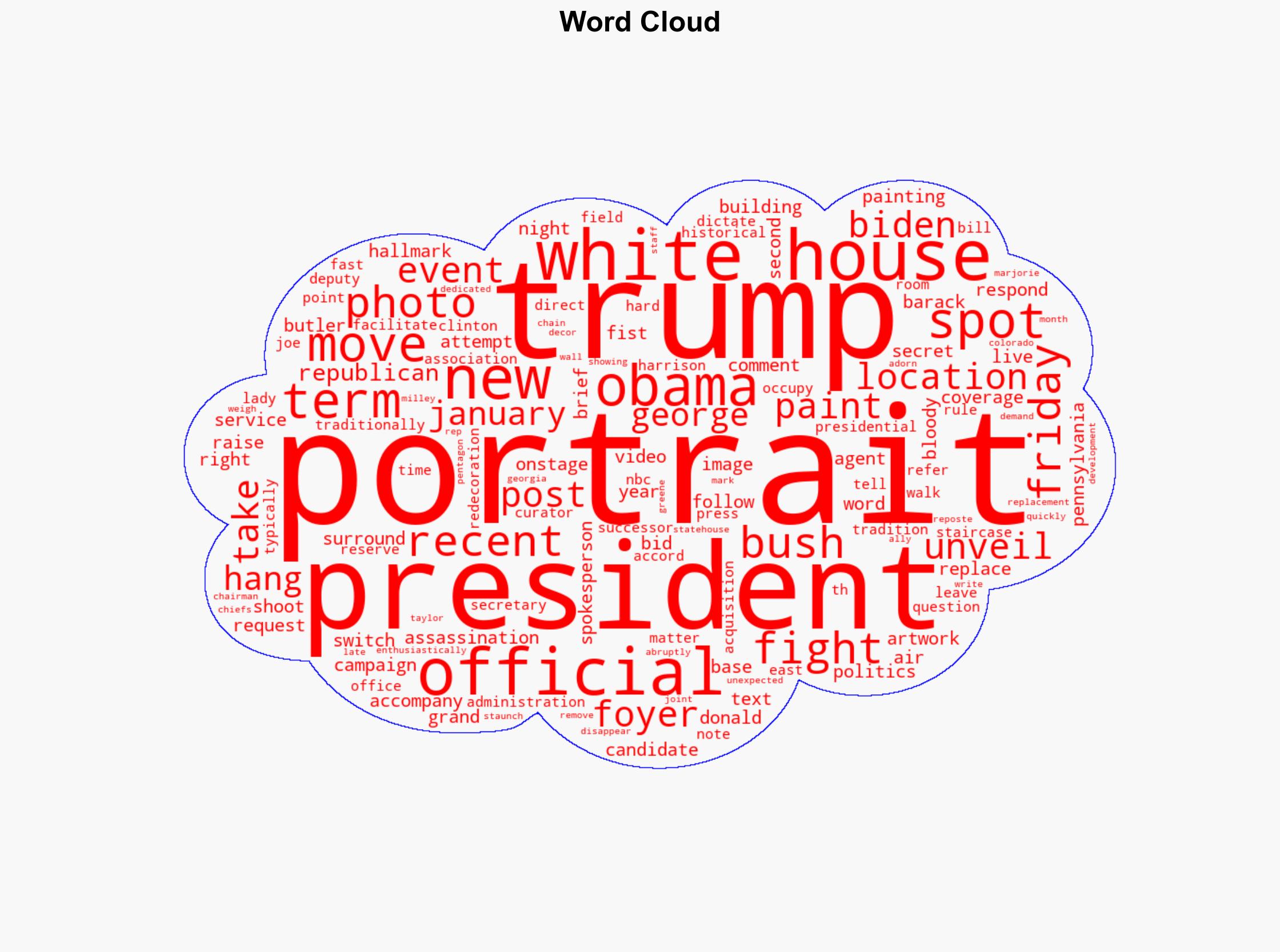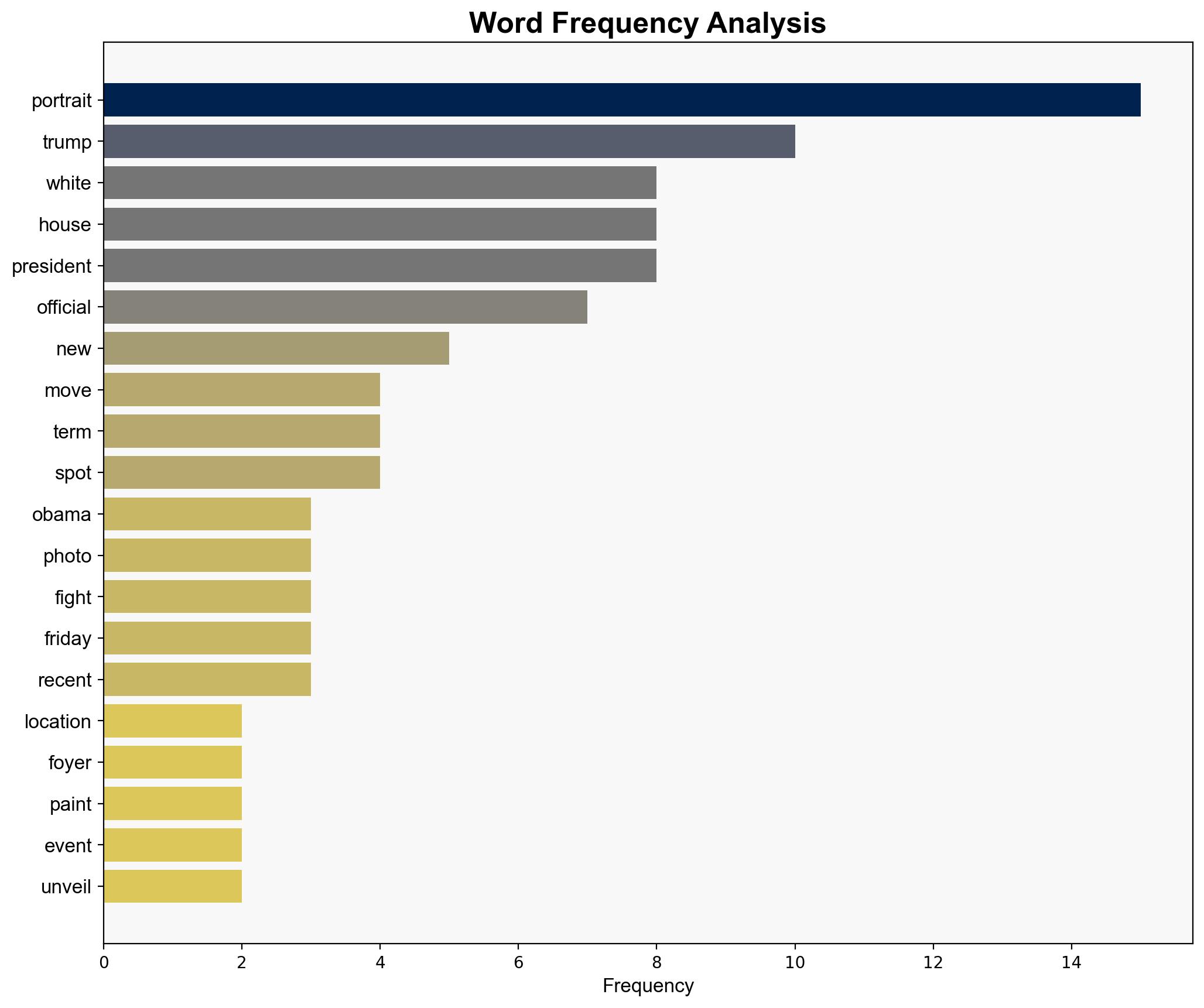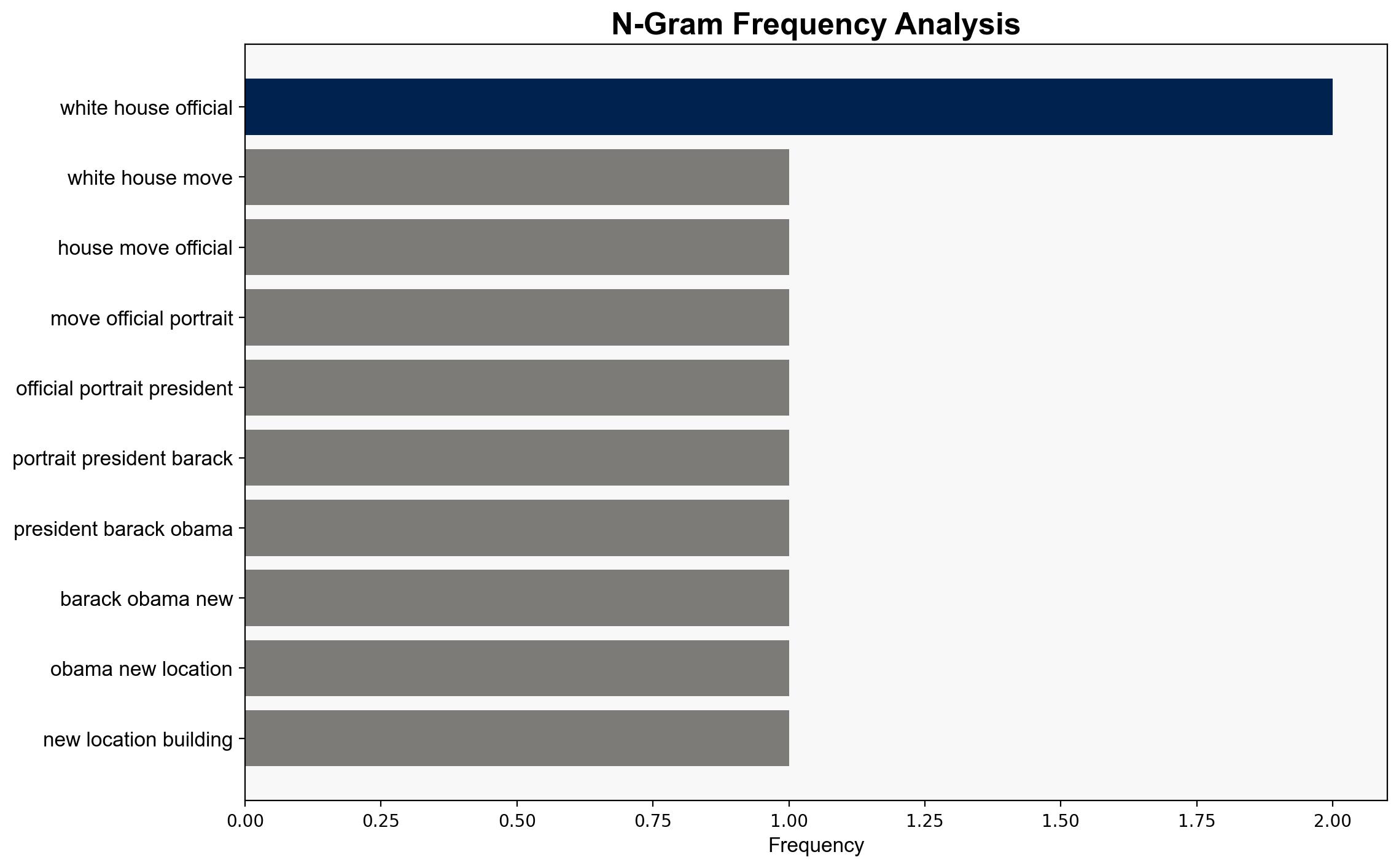White House moves Obama portrait to display painting of Trump after assassination attempt – NBC News
Published on: 2025-04-12
Intelligence Report: White House moves Obama portrait to display painting of Trump after assassination attempt – NBC News
1. BLUF (Bottom Line Up Front)
The White House has relocated the official portrait of Barack Obama, replacing it with a painting of Donald Trump, depicting him shortly after an assassination attempt. This move, announced via a brief video, signifies a shift in the traditional display of presidential portraits. The decision reflects ongoing political dynamics and may influence public perception and political discourse. Immediate responses from key political figures have varied, indicating potential implications for political alliances and public sentiment.
2. Detailed Analysis
The following structured analytic techniques have been applied for this analysis:
General Analysis
The relocation of Barack Obama’s portrait and the display of Donald Trump’s painting is a symbolic gesture with potential political ramifications. The portrait of Trump, based on a controversial moment, may evoke strong reactions from both supporters and critics. This action could be interpreted as an attempt to reshape the narrative around Trump’s presidency and influence his political legacy. The absence of an official portrait for Joe Biden further complicates the traditional practices of presidential portraiture, suggesting a departure from established norms.
3. Implications and Strategic Risks
The decision to alter the display of presidential portraits could have several implications:
- National Security: The portrayal of a former president in a moment of vulnerability may raise security concerns and influence public perception of security protocols.
- Regional Stability: The move may exacerbate political polarization, affecting regional political dynamics and stability.
- Economic Interests: Changes in political sentiment could impact economic policies and investor confidence, particularly if political tensions escalate.
4. Recommendations and Outlook
Recommendations:
- Monitor public and political reactions to the portrait change to assess potential impacts on political alliances and public sentiment.
- Consider engaging with cultural and historical experts to evaluate the implications of altering traditional portrait displays.
- Explore opportunities for dialogue and reconciliation to mitigate potential political polarization.
Outlook:
Best-case scenario: The portrait change is accepted as a routine update, with minimal impact on political dynamics.
Worst-case scenario: The move exacerbates political divisions, leading to heightened tensions and potential unrest.
Most likely outcome: The portrait change becomes a focal point for political discourse, influencing narratives around the involved individuals and their legacies.
5. Key Individuals and Entities
The report mentions significant individuals such as Barack Obama, Donald Trump, Joe Biden, Bill Clinton, George W. Bush, Marjorie Taylor Greene, and Mark Milley. Their involvement or representation in the portrait change carries implications for their public perception and political influence.




